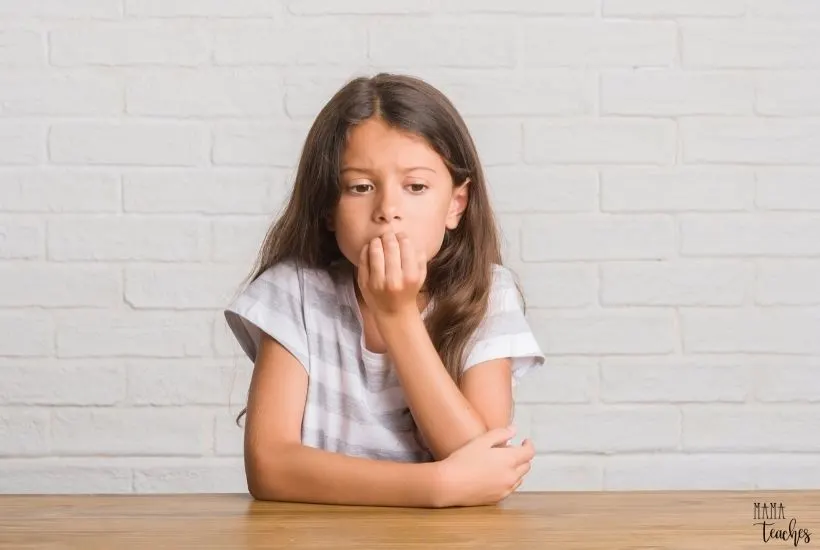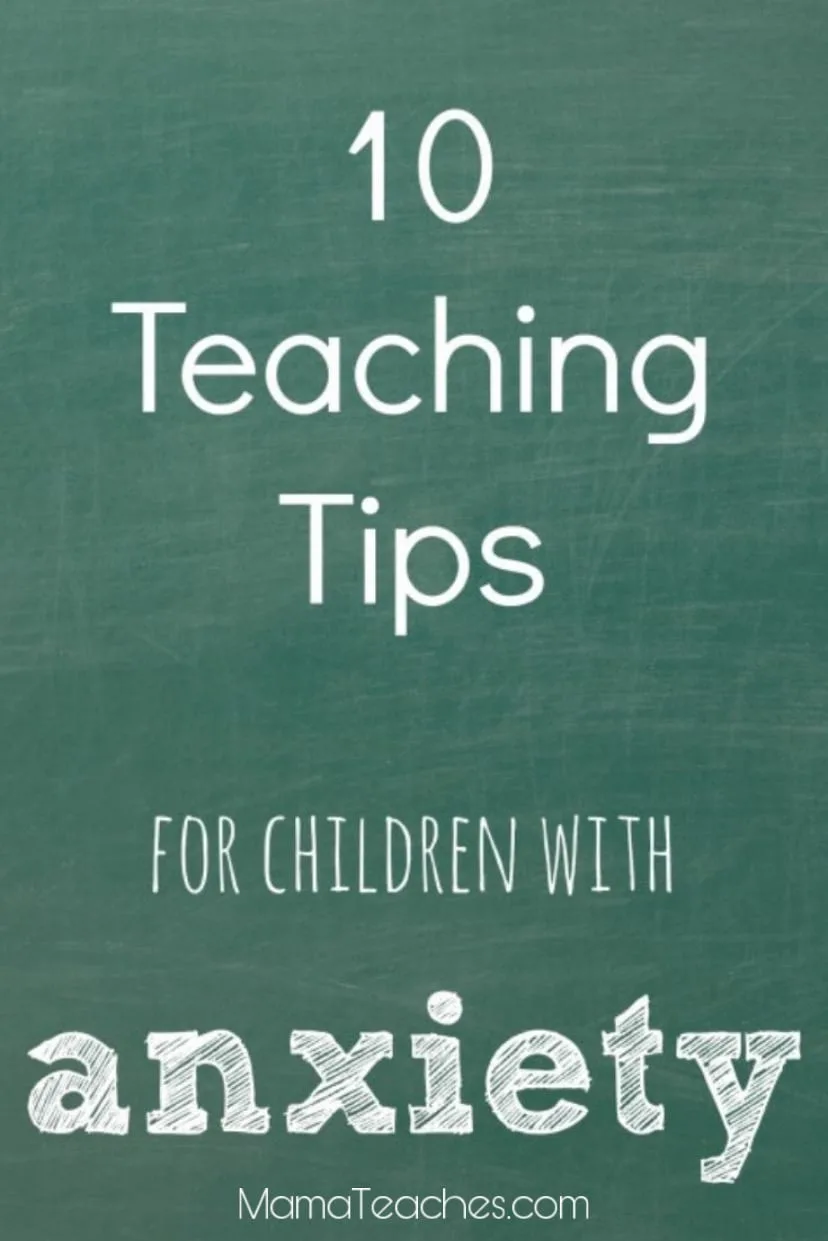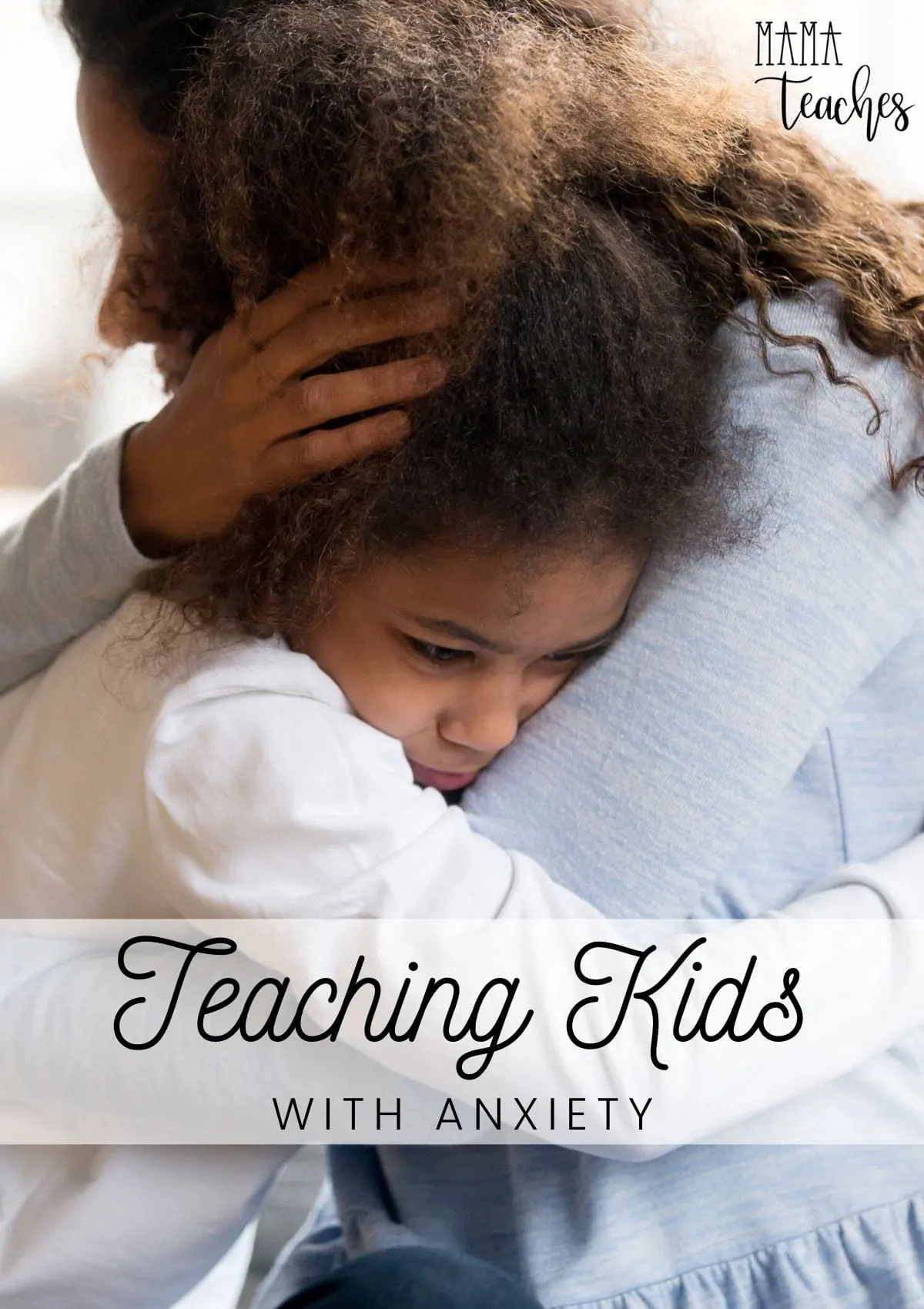
This article contains affiliate links to things that you might like.
Anxiety is classified as a behavioral disorder that is often co-occurring with other conditions.
It is one of the most common behavioral disorders in children and is on the rise as more demands for academic and recreational excellence are placed on our kids.
There are many different anxiety disorders including:
- separation anxiety disorder
- social phobia
- generalized anxiety disorder
- obsessive-compulsive disorder
- posttraumatic stress disorder
Anxiety can also include phobias and irrational fears of future events, objects or situations.
Characteristics of Anxiety
An anxiety disorder is characterized by a chronic fear, nervousness, shyness, and avoidance of people or situations that interfere with how a child may function.
No amount of reassurance or comforting measures can help to alleviate the child’s anxiety.
Some common signs of an anxiety disorder are:
Generalized Anxiety Disorder (GAD)
Excessive worry, fatigue or inability to sleep, difficulty concentrating and irritability.
Obsessive-Compulsive Disorder (OCD)
Obsessions and/or compulsions, constant worry about germs, excessive concern about order, washing and rewashing hands and arranging and rearranging items in a certain order or way.
Post Traumatic Stress Disorder (PTSD)
Appear nervous or jumpy, difficulty sleeping and withdrawn from friends and family.
Separation Anxiety
Feelings of homesickness, crying, refusal to go to school and worry for parents while away.
Social Anxiety
Fear of performance, shyness, and isolation in social situations.

Causes of Anxiety in Children
There may be multiple causes for an anxiety disorder.
They may range from genetics, parenting, stress, an individual’s personality, and traumatic events.
The Impact of Anxiety on Children in the Classroom
Children with an anxiety disorder may struggle academically and/or socially in school.
They may need extra support in building confidence and positive peer relationships.
These learners can often be the quiet, unassuming children in a class and it is important to recognize their unique needs.
If the symptoms of anxiety are not addressed they may lead to or be complicated by other conditions.
Teaching Tips for Helping Students with Anxiety
- Provide a way to release anxiety. This will vary from child to child but could include listening to calming sounds or taking a body break. It might also include trying something like this calming lavender playdough recipe and having enough for your students to squish throughout the day.
- Validate the child’s feelings, take their concerns seriously.
- Give the child a place where it is safe to fail, provide a quiet spot away from peers to manage their anxiety.
- Be organized, give the child a visual schedule at their desk, break the school day into sections that the child can visualize and manage.
- Give the child more time to process information, the situation and the demands that may be asked of them.
- Remain calm and relaxed, provide a comforting presence.
- Be consistent and have a predictable classroom routine.
- Teach and model coping techniques, deep breathing for example (smell the flower, blow out the candle).
- Use a Universal Design for Learning (UDL) approach that allows the student some freedom in choosing their task or assignment.
- Try not to put the child “on the spot” or call attention to their anxiety.
- Allow the child to have an item or toy that provides comfort at school.
The Most Important Thing You Can Do For Students with Anxiety
Not only have I dealt with students who are struggling with anxiety in my own classroom, but I am also the mom of children with anxiety.
I have learned through experience on both ends of the issue that the most important thing that a teacher can do for students with anxiety is to show they care.
Let students know they are seen, heard, valued, and cherished.
Be the steady, consistent, and safe space for kids to relax and, if even for a moment, breathe out their anxiety.
You can change your students’ lives.

Websites and Resources for More Information on Anxiety and Children
Understanding Symptoms of Anxiety in Children
I think that it is important to understand that every child is an individual first and should not be defined by their diagnosis.
And every family has the right to treat the condition however they see fit.
I do believe that the decision on how to treat your child (if at all) should be made after careful consideration, education, implementation of behavioral modification plans and consultation with professionals (teachers, counselors, Pediatricians, etc.).
